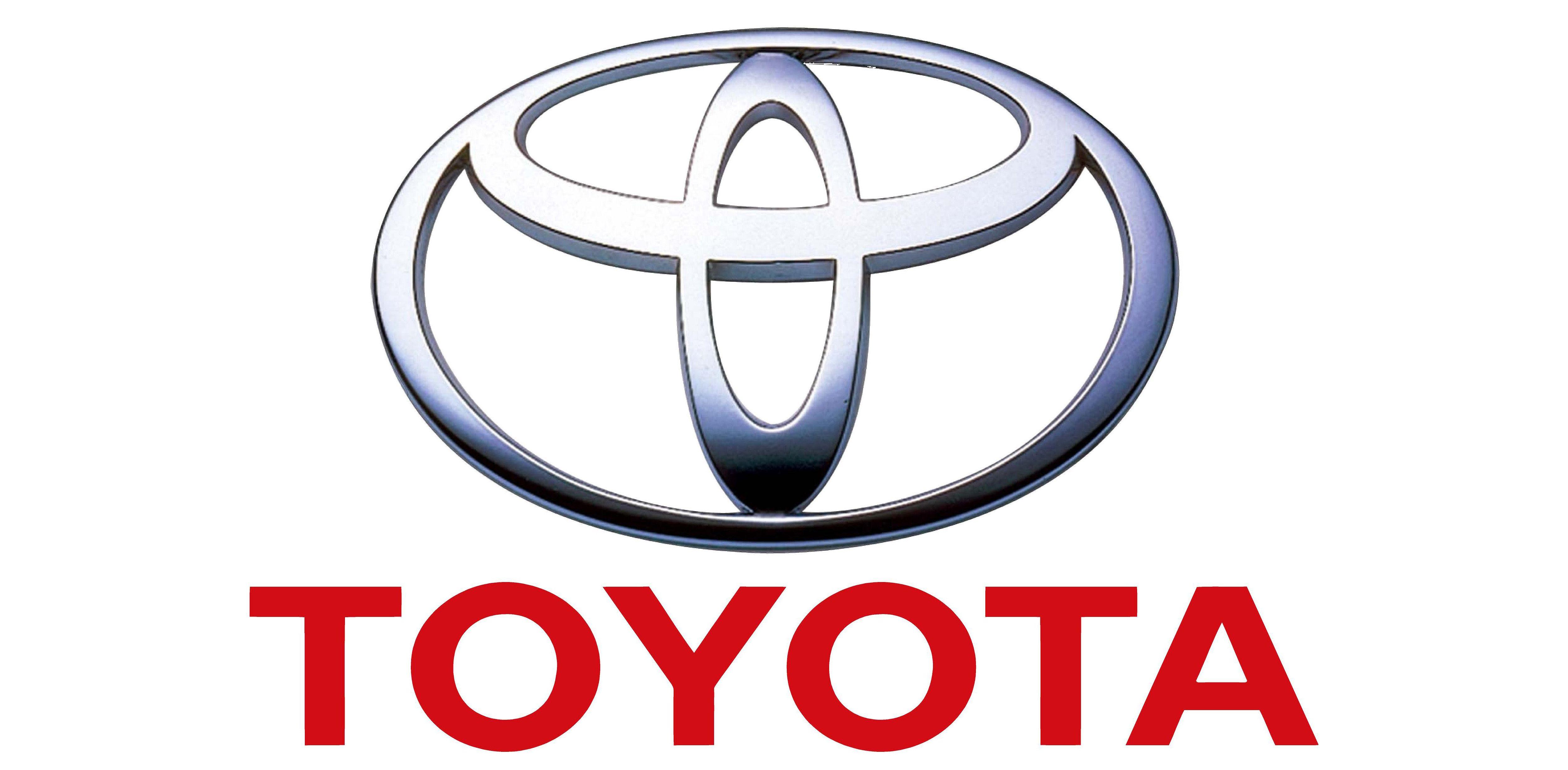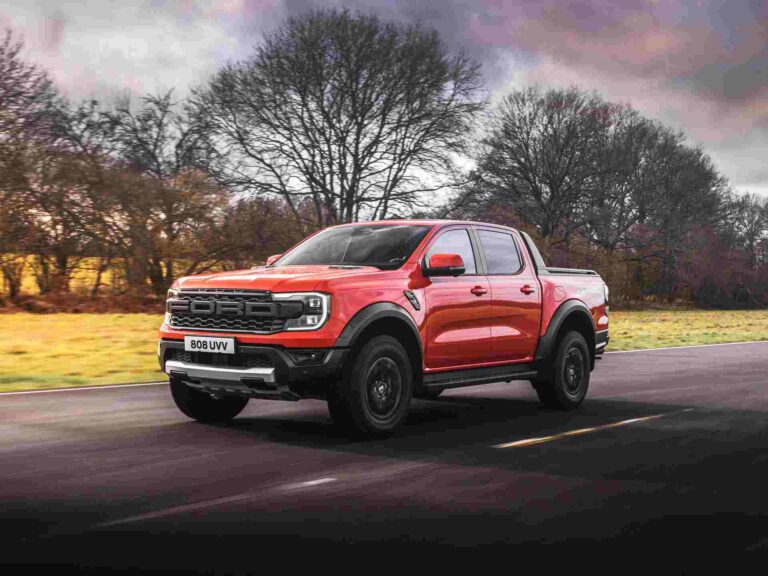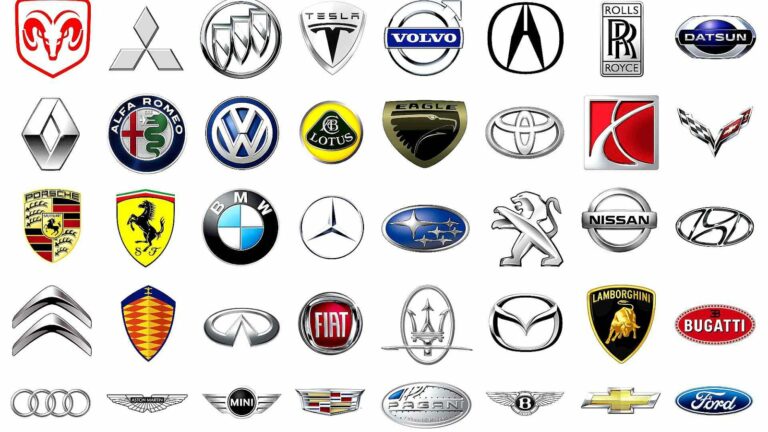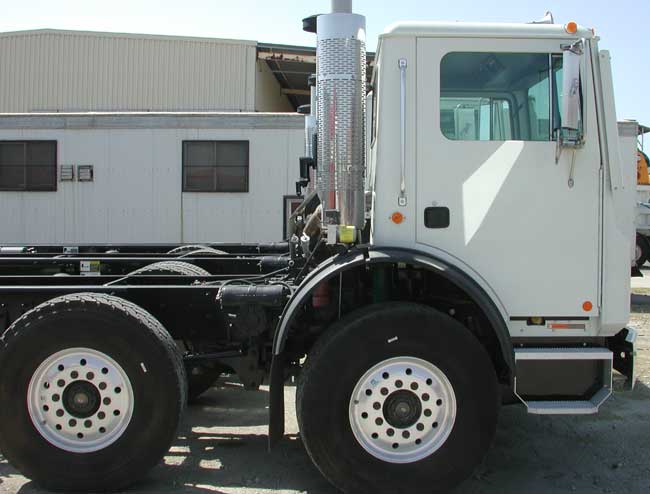Australian Car Brands Names: A Legacy of Innovation and Resilience
Australian Car Brands Names: A Legacy of Innovation and Resilience cars.truckstrend.com
Australia, a vast continent known for its unique landscapes and vibrant culture, also boasts a rich and often poignant history in automotive manufacturing. While the roar of locally-built engines has largely faded from production lines, the names of Australian car brands resonate deeply within the nation’s identity, representing periods of significant industrial prowess, innovation, and a distinct automotive culture. Understanding these brands is not just a dive into industrial history; it’s an exploration of national pride, engineering ingenuity, and the economic forces that shaped a nation.
This article delves into the fascinating world of Australian car brands, exploring their rise, their iconic models, the challenges they faced, and their enduring legacy. From the dominant players that put Australia on wheels to the niche manufacturers that pushed the boundaries of performance, we will navigate the story of a unique automotive landscape.
Australian Car Brands Names: A Legacy of Innovation and Resilience
The Golden Age: Iconic Australian Car Brands
For much of the 20th century, Australian automotive manufacturing was a thriving industry, dominated by a few key players who adapted global designs to local conditions and even pioneered their own unique vehicles.
Holden: The Heartbeat of Australia
Undoubtedly the most iconic Australian car brand, Holden holds a legendary status. Originating as a saddlery business in 1856, it transitioned to vehicle body building in 1908 and became part of General Motors in 1931, eventually manufacturing complete cars. The launch of the 48-215 (FX) in 1948, proudly marketed as "Australia’s Own Car," marked a watershed moment.
Holden’s success was built on understanding the Australian psyche and terrain. Its cars were rugged, reliable, and capable of handling long distances and varied road conditions. Key models like the FJ, Kingswood, and the ubiquitous Commodore became symbols of Australian life, found in every driveway, from city suburbs to outback stations. The Commodore, introduced in 1978, evolved through multiple generations, becoming Australia’s best-selling car for many years and forming the backbone of the V8 Supercars racing series.
Holden wasn’t just a car brand; it was an employer of thousands, a cultural icon, and a source of immense national pride. Its engineering and design centres contributed significantly to global GM projects. However, facing escalating production costs, a small domestic market, and global economic pressures, Holden ceased local manufacturing in 2017, a moment that reverberated across the country. The brand continued as an importer until General Motors announced its complete retirement from the Australian and New Zealand markets in 2020, effectively ending the Holden marque.
Ford Australia: The Enduring Rival
Ford’s presence in Australia dates back to 1904, making it one of the earliest automotive importers. Local assembly began in 1925, and by the 1960s, Ford Australia was Holden’s fiercest competitor, locked in an intense rivalry that captivated the nation.
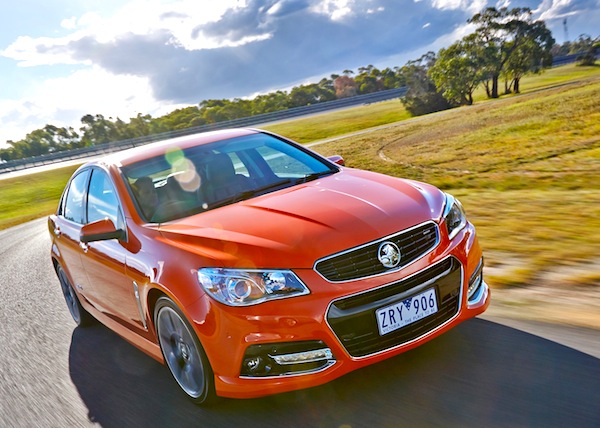
Ford’s most significant local model was the Falcon, introduced in 1960. Like the Commodore, the Falcon was adapted and engineered locally to suit Australian conditions, becoming a staple of family transport, police fleets, and taxi services. Iconic variants like the XR GT Falcon, XA/XB GTs, and the mighty FPV F6 and GT models etched themselves into Australian motorsport and performance car history. The Fairlane and LTD luxury sedans also showcased Ford Australia’s design and engineering capabilities.
Ford Australia’s Broadmeadows and Geelong plants were engineering hubs, developing models for both local and international markets. Despite consistent efforts to innovate and adapt, Ford Australia also succumbed to the economic realities of local manufacturing, ceasing production of the Falcon and Territory in 2016, just ahead of Holden. Today, Ford remains a strong seller in Australia, but all its vehicles are imported.
Chrysler Australia / Mitsubishi Motors Australia: The Valiant Contenders
While Holden and Ford dominated, other brands played significant roles. Chrysler Australia was a strong third contender, particularly in the 1960s and 70s. Its most famous local product was the Valiant, a robust and distinctive sedan known for its performance and durability. The Valiant Charger, in particular, became an Australian muscle car legend, with its bold styling and powerful Hemi engines.
In 1980, Mitsubishi Motors acquired Chrysler Australia’s manufacturing operations, leading to the establishment of Mitsubishi Motors Australia. The company continued local production, most notably with the Mitsubishi Magna and its luxury derivative, the Verada. These large family sedans were designed and engineered specifically for the Australian market, offering strong performance and value. Mitsubishi’s Tonsley Park plant in South Australia was a significant employer until its closure in 2008, marking another chapter in the decline of local volume manufacturing.

Niche and Boutique Australian Car Brands
Beyond the volume manufacturers, Australia has also been home to a vibrant scene of smaller, specialized car manufacturers, often focusing on sports cars, performance vehicles, or unique designs.
HSV (Holden Special Vehicles) & FPV (Ford Performance Vehicles)
Born from the intense Holden vs. Ford rivalry, HSV (1987-2020) and FPV (Ford Performance Vehicles, 2002-2014) were dedicated performance divisions that took standard Holden Commodores and Ford Falcons/Territories, respectively, and transformed them into high-performance, limited-edition machines. These brands produced some of Australia’s most powerful and desirable cars, featuring upgraded engines (often supercharged V8s), enhanced suspensions, and aggressive styling. HSV’s Maloo utility and GTS sedans, and FPV’s GT and F6 models, represent the pinnacle of Australian muscle car engineering. Their demise coincided with the end of local Holden and Ford manufacturing.
Elfin Sports Cars
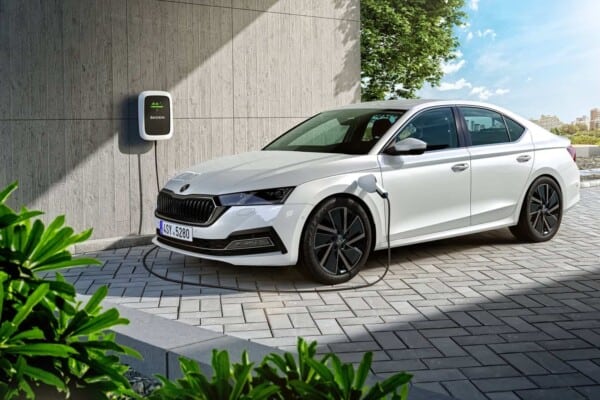
One of Australia’s longest-surviving sports car manufacturers, Elfin Sports Cars (founded 1959), built a reputation for crafting lightweight, high-performance track and road cars. Their models, like the Elfin Streamliner and Clubman, were renowned for their handling and racing pedigree. Although production has been sporadic and ownership has changed hands, Elfin represents the enduring passion for bespoke automotive craftsmanship in Australia.
Bolwell
Bolwell (founded 1962) is another notable name in Australian sports car history. Known for its distinctive fiberglass-bodied sports cars, such as the Ikara and the Nagari, Bolwell cars were a testament to independent Australian design and engineering. While not a volume producer, Bolwell’s unique creations remain sought-after collector’s items.
Emerging and Specialist Brands (Current Landscape)
In the wake of mass manufacturing’s departure, a few smaller entities continue to explore niche markets, often focusing on electric vehicles or ultra-low volume specialist cars. Brands like ACE EV have emerged with plans for light electric commercial vehicles, while various bespoke workshops and custom builders continue the tradition of Australian automotive innovation on a smaller scale. However, none currently operate at a scale comparable to the historical giants.
The Decline of Australian Automotive Manufacturing: Challenges and Lessons
The story of Australian car brands is incomplete without understanding the factors that led to the cessation of local volume manufacturing. Several interconnected challenges contributed to this outcome:
- Small Domestic Market: Australia’s relatively small population (around 25 million) meant that local manufacturers struggled to achieve the economies of scale necessary to compete with global giants producing millions of vehicles annually.
- High Production Costs: Labour costs, energy prices, and the cost of sourcing components in Australia were generally higher than in major manufacturing hubs overseas.
- Globalisation and Free Trade: Reduced tariffs and increased competition from imported vehicles made it increasingly difficult for locally built cars to compete on price.
- Currency Fluctuations: A strong Australian dollar made imported cars cheaper and Australian exports more expensive, further eroding the competitiveness of local manufacturing.
- Lack of Investment: Global parent companies (GM, Ford, Mitsubishi) often prioritised investment in larger, more profitable markets, leaving Australian operations with less capital for modernisation and new model development.
- Government Policy Shifts: While governments historically offered protection and subsidies, a move towards market liberalisation meant reduced support, making the industry more vulnerable.
The closure of manufacturing plants led to significant job losses and a cultural shift, marking the end of an era.
The Legacy and Future of Australian Automotive Identity
Despite the absence of mass production, the legacy of Australian car brands lives on. For many, a Holden or a Ford Falcon isn’t just a car; it’s a piece of family history, a memory of road trips, or a symbol of national identity. This legacy is preserved through:
- Enthusiast Communities: Thriving car clubs and passionate collectors keep the spirit of these brands alive through restoration, events, and a shared appreciation for their engineering and cultural significance.
- Motorsport: The V8 Supercars championship, though now featuring imported models, continues to celebrate the heritage of Holden and Ford racing.
- Design and Engineering Talent: While manufacturing ceased, Australia retains significant automotive design, engineering, and testing capabilities, with many talented individuals now contributing to global automotive projects.
- Aftermarket Industry: A robust aftermarket sector continues to support the maintenance and modification of older Australian-built vehicles.
The "Australian Car Brand" today largely refers to a historical entity or a niche, specialist manufacturer. The future, if any, for Australian car brands lies in low-volume, high-value propositions, perhaps in specialist EVs, autonomous vehicle technology, or niche performance vehicles, rather than a return to mass-market production.
Practical Advice and Actionable Insights
For those interested in Australian car brands, here’s how to engage with their legacy:
- Visit Museums and Collections: Institutions like the National Motor Museum in Birdwood, South Australia, and various private collections offer incredible insights into Australian automotive history.
- Join Car Clubs: Connecting with owners’ clubs (e.g., Holden clubs, Falcon clubs) provides access to a wealth of knowledge, resources, and a supportive community.
- Attend Car Shows: Local car shows and historic motorsport events are excellent opportunities to see these iconic vehicles up close and speak with passionate owners.
- Explore Local Literature: Books, documentaries, and online archives are rich sources of information on specific models and the broader industry.
- Consider Ownership (Carefully): If you’re a enthusiast, owning a classic Australian-built car can be a rewarding experience, but be prepared for maintenance and parts sourcing for older models.
Comprehensive Information Table: Australian Car Brands Names
While a "price table" for car brands is not applicable, here’s a comprehensive information table detailing key Australian car brands and their legacy:
| Brand Name | Era of Significant Local Manufacturing/Operation | Key Models/Focus | Current Status | Legacy/Significance |
|---|---|---|---|---|
| Holden | 1948 – 2017 (Manufacturing); 1931 – 2020 (Brand) | 48-215 (FX), FJ, Kingswood, Torana, Commodore (Sedans, Utes, Wagons) | Brand retired globally by General Motors in 2020. | "Australia’s Own Car," cultural icon, dominant market leader for decades. |
| Ford Australia | 1925 – 2016 (Manufacturing); Ongoing (Brand) | Falcon (Sedans, Utes, Wagons), Fairlane, LTD, Territory (SUV) | Continues as a strong importer; local manufacturing ceased in 2016. | Holden’s primary rival, significant local engineering, motorsport legend. |
| Chrysler Australia | 1951 – 1980 | Valiant (Sedan, Wagon, Ute), Valiant Charger (Muscle Car) | Manufacturing operations sold to Mitsubishi in 1980; brand imported by Fiat Chrysler. | Strong third player, known for robust Valiants and iconic Charger muscle cars. |
| Mitsubishi Motors Australia | 1980 – 2008 | Magna, Verada (Family Sedans) | Continues as a strong importer; local manufacturing ceased in 2008. | Produced Australia-specific family cars, significant local employer. |
| HSV (Holden Special Vehicles) | 1987 – 2020 | Commodore-based performance sedans (ClubSport, GTS), Maloo (Performance Ute) | Ceased operations with the end of Holden brand. | Pinnacle of Australian V8 muscle cars, highly desirable performance vehicles. |
| FPV (Ford Performance Vehicles) | 2002 – 2014 | Falcon-based performance sedans (GT, F6), FPV Territory (Performance SUV) | Ceased operations with the end of Ford Falcon manufacturing. | Ford’s answer to HSV, produced iconic performance variants of the Falcon. |
| Elfin Sports Cars | 1959 – Present (Sporadic Production) | Streamliner, Clubman, MS8 (Lightweight Sports Cars) | Low-volume, specialist manufacturer; production intermittent. | Longest-running Australian sports car manufacturer, racing pedigree. |
| Bolwell | 1962 – Present (Sporadic Production) | Ikara, Nagari (Fiberglass Sports Cars) | Low-volume, specialist manufacturer; production intermittent. | Known for distinctive, locally designed fiberglass sports cars. |
Frequently Asked Questions (FAQ) about Australian Car Brands Names
Q1: Are there any Australian car brands still manufacturing cars in Australia?
A1: No, mass-volume car manufacturing by major brands like Holden, Ford, and Mitsubishi ceased in Australia by 2017. There are a few very small, niche manufacturers like Elfin and Bolwell, and some emerging electric vehicle startups, but they operate on an extremely limited scale, not comparable to historical production.
Q2: Why did Australian car manufacturing stop?
A2: A combination of factors led to the decline, including Australia’s small domestic market, high production costs, increasing competition from imported vehicles due to reduced tariffs, a strong Australian dollar, and a lack of significant investment from global parent companies.
Q3: What was "Australia’s Own Car"?
A3: The Holden 48-215, launched in 1948, was famously marketed as "Australia’s Own Car." It symbolised post-war industrial capability and national pride.
Q4: Can I still buy a new Holden or Ford Falcon?
A4: No. Holden ceased to exist as a brand in 2020, and the Ford Falcon (and Territory) ceased production in Australia in 2016. Any new Holden or Falcon vehicles would be old stock. Both Ford and General Motors (which owned Holden) continue to sell imported vehicles in Australia under their respective global brands, but not the iconic local models.
Q5: What were the most popular Australian-made cars?
A5: The Holden Commodore and Ford Falcon were consistently the best-selling and most iconic Australian-made cars for decades. Other popular models included the Holden Kingswood, Torana, and the Mitsubishi Magna.
Q6: What is the legacy of Australian car brands?
A6: The legacy is multifaceted: a significant contribution to Australia’s industrial development, a source of national pride, iconic vehicles deeply embedded in the cultural fabric, and a testament to Australian engineering and design ingenuity. Enthusiast communities, motorsport, and a strong aftermarket industry continue to celebrate this heritage.
Conclusion
The story of Australian car brands is a compelling narrative of ambition, innovation, and adaptation, ultimately shaped by global economic forces. While the era of mass-produced "Aussie cars" has concluded, the names Holden, Ford Falcon, Valiant, HSV, and FPV remain etched in the national consciousness. They represent more than just vehicles; they symbolise a period of robust industrial identity, the ingenuity of Australian engineers and designers, and the cultural fabric of a nation that once proudly put itself on wheels. The passion for these brands endures, ensuring that the legacy of Australian automotive names will continue to drive forward in the hearts and minds of enthusiasts for generations to come.
